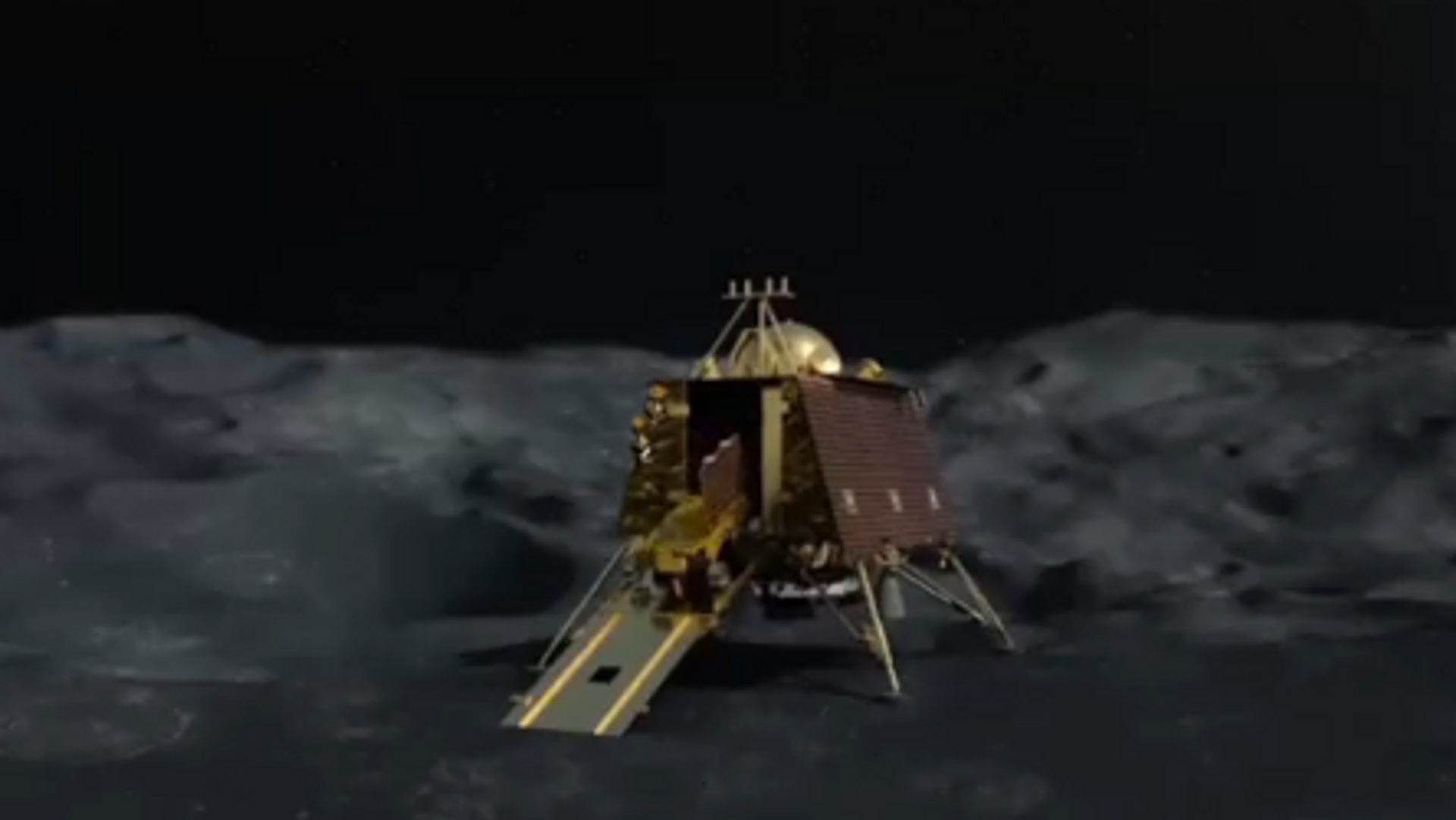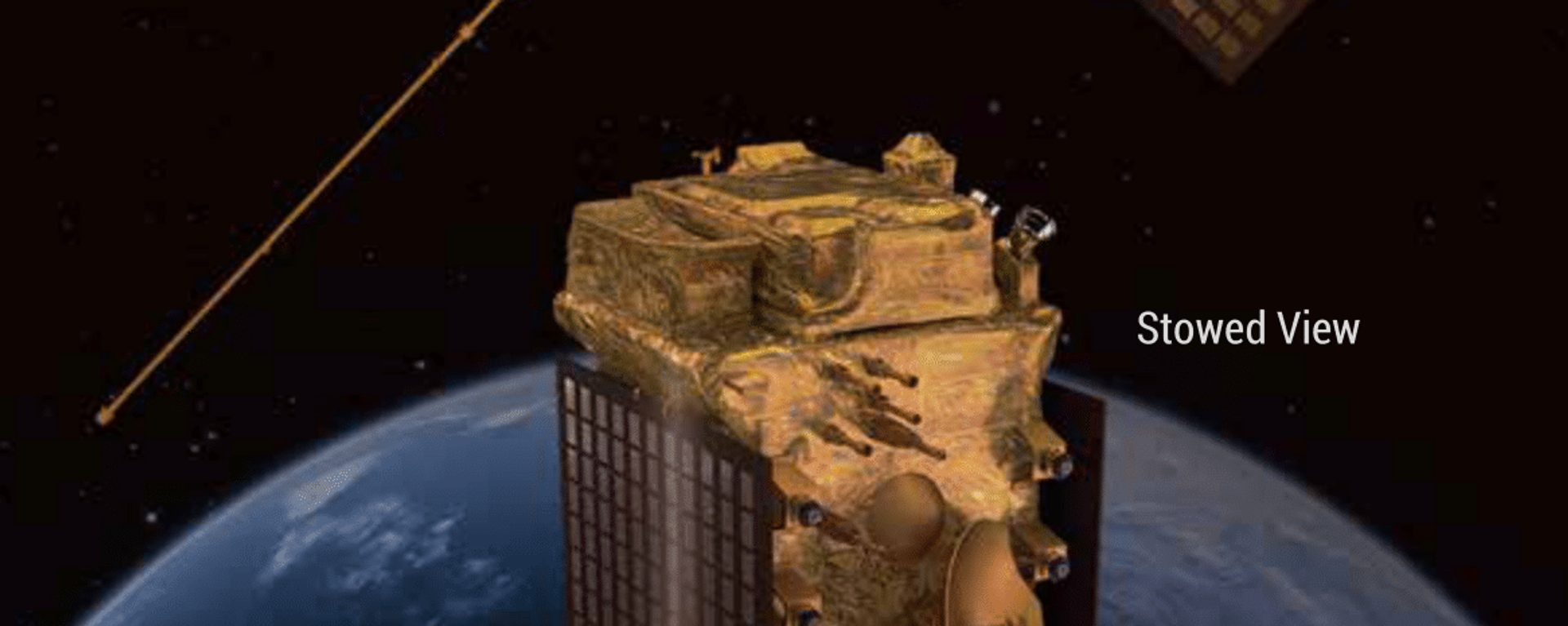https://sputniknews.in/20230830/indian-moon-rover-detects-sulphur-oxygen-on-south-poles-surface-3926552.html
Indian Moon Rover Detects Sulphur, Oxygen on South Pole's Surface
Indian Moon Rover Detects Sulphur, Oxygen on South Pole's Surface
Sputnik India
Indian Space Research Organisation (ISRO) has confirmed that sulphur is detected on the site measurements of the south polar region of the Moon.
2023-08-30T12:03+0530
2023-08-30T12:03+0530
2023-08-30T12:03+0530
science & tech
moon
moon mission
moon landing
space satellite
space industry
space exploration
space rocket
indian space research organisation (isro)
india
https://cdn1.img.sputniknews.in/img/07e7/08/18/3799078_48:0:492:250_1920x0_80_0_0_23085168ea931a24a1384dbaf39ff63f.png
The Indian Space Research Organization (ISRO) has confirmed that sulfur has been detected in the site measurements of the south polar region of the Moon .The measurements were made by the Laser-Induced Breakdown Spectroscopy (LIBS) instrument onboard Chandrayaan-3's moon rover, Pragyan.The Indian space agency said the in-situ measurements confirmed the presence of sulfur in the region “unambiguously,” which was not feasible using the instruments onboard the orbiters.Scientists are also searching for signs of frozen water. If frozen water is detected, this could help astronauts in future space missions as a potential source of drinking water or to make rocket fuel.
https://sputniknews.in/20230829/isro-aditya-l1-solar-mission-indias-sun-mission-all-set-for-launch-3891876.html
moon
india
Sputnik India
feedback.hindi@sputniknews.com
+74956456601
MIA „Rossiya Segodnya“
2023
Deexa Khanduri
https://cdn1.img.sputniknews.in/img/07e6/0c/13/138923_52:0:533:481_100x100_80_0_0_cadf23d341691fc65ff2b22fd1afe584.jpg
Deexa Khanduri
https://cdn1.img.sputniknews.in/img/07e6/0c/13/138923_52:0:533:481_100x100_80_0_0_cadf23d341691fc65ff2b22fd1afe584.jpg
News
en_IN
Sputnik India
feedback.hindi@sputniknews.com
+74956456601
MIA „Rossiya Segodnya“
Sputnik India
feedback.hindi@sputniknews.com
+74956456601
MIA „Rossiya Segodnya“
Deexa Khanduri
https://cdn1.img.sputniknews.in/img/07e6/0c/13/138923_52:0:533:481_100x100_80_0_0_cadf23d341691fc65ff2b22fd1afe584.jpg
india's chandrayaan module vikram, rover pragyan, dark side of the lunar crate, chandrayaan 3 landing, chandrayaan 3 landing date, chandrayaan 3 launch date, chandrayaan 3 news, vikram lander, vikram lander photo, pragyan rover, pragyan rover video, pragyan rover weight, pragyan rover news, pragyan rover life, moon south pole images, moon south pole water, south pole mystery
india's chandrayaan module vikram, rover pragyan, dark side of the lunar crate, chandrayaan 3 landing, chandrayaan 3 landing date, chandrayaan 3 launch date, chandrayaan 3 news, vikram lander, vikram lander photo, pragyan rover, pragyan rover video, pragyan rover weight, pragyan rover news, pragyan rover life, moon south pole images, moon south pole water, south pole mystery
Indian Moon Rover Detects Sulphur, Oxygen on South Pole's Surface
Deexa Khanduri
Sputnik correspondent
India’s mission to the Moon, Chandrayaan-3, is anticipated to provide data regarding the Moon's atmosphere, soil composition, and minerals at the south pole of the crater.
The Indian Space Research Organization (ISRO) has confirmed that sulfur has been detected in the site measurements of the south polar region of the Moon .
The measurements were made by the Laser-Induced Breakdown Spectroscopy (LIBS) instrument onboard Chandrayaan-3's moon rover, Pragyan.
The LIBS has also detected aluminum, iron, calcium, chromium, titanium, manganese, oxygen and silicon on the lunar surface, the ISRO stated on its website. “Search for Hydrogen (H) is underway,” the ISRO added.
The Indian space agency said the in-situ measurements confirmed the presence of sulfur in the region “unambiguously,” which was not feasible
using the instruments onboard the orbiters.
"Already orbiters such as Chandrayaan-1, Chandrayaan-2 and American orbiters have done remote sensing and mapped the minerals on the surface of the moon. But it's a remote sensing taken from roughly about 100 km away... You need to land on the moon at least in few places, look for this data and see whether this data matches with the remote sensing data. If they match then our confidence on the remote sensing data will be very high..," space scientist T.V. Venkateswaran told Indian media.
Scientists are also searching for signs of frozen water. If frozen water is detected, this could help astronauts in future space missions as a potential source of drinking water or to make rocket fuel.



